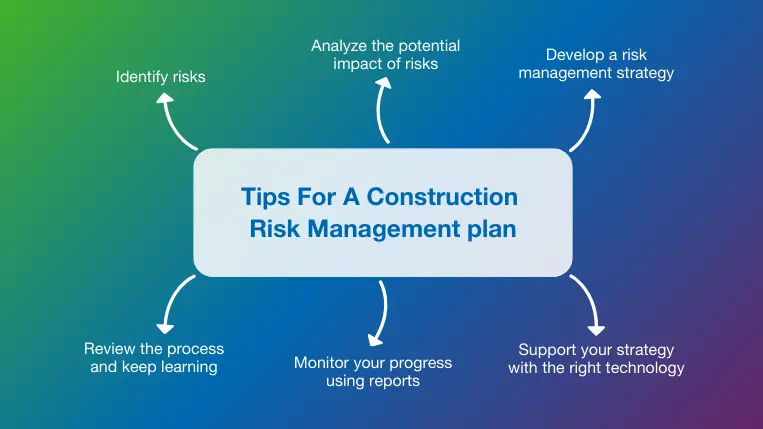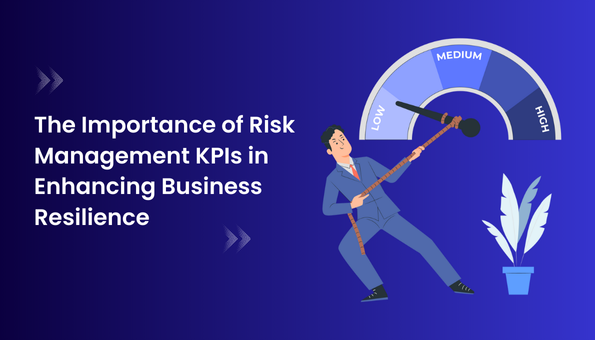Unlocking the Actual Importance of Risk Management for Sustainable Growth
Unlocking the Actual Importance of Risk Management for Sustainable Growth
Blog Article
The Vital Importance of Risk Management in Getting Organizational Objectives
In the quickly evolving business landscape, the capability to browse uncertainty has actually ended up being a crucial. This is where Risk Management steps in, providing a structured approach to determining, examining, and mitigating possible barricades to advance. It's even more than simply a safety procedure - it's a critical tool, promoting resilience and advancement. As we discover the important function of Risk Management in accomplishing business goals, one can not wonder but assist: just how does this equate right into real-world success?
Understanding the Idea of Risk Management in Service

The Integral Duty of Risk Management in Strategic Preparation
Incorporating Risk Management into critical planning works as a guard for organizations, securing their long-lasting strategies with a solid structure of preparedness and strength. It runs as the company's radar, finding possible risks and susceptabilities that could interrupt the course in the direction of attaining their mentioned purposes. Risk Management offers a framework for expecting unpredictabilities and creating ideal reactions, guaranteeing the company's survival and prosperity even despite misfortune. By integrating Risk Management into tactical preparation, companies can transform these uncertainties right into possibilities for growth and technology. This strategic interweaving of Risk Management cultivates versatility, making companies more durable and allowing them to navigate the ever-changing company landscape confidently. Risk Management becomes an indispensable tool in tactical planning, important in protecting lasting success.

Methods for Identifying, Assessing, and Prioritizing Dangers
Navigating the facility landscape of risks calls for the application of certain techniques for their prioritization, identification, and analysis. read this The procedure starts with Risk identification, utilizing tools such as SWOT evaluation, which aids in determining possible risks and possibilities. Next off, Risk assessment is performed to establish the possible effect and possibility of each Risk. Tools such as Risk matrices and impact-probability charts are utilized for this. Finally, threats are focused on based on their possible effect and probability, permitting companies to concentrate their sources on critical threats. This systematic technique guarantees an extensive understanding of the Risk landscape, enabling organizations to make enlightened choices and effectively handle dangers to attain their goals - importance of risk management.
Safeguarding Organizational Procedures With Reliable Risk Management
In the organization landscape filled with unpredictabilities, effective Risk Management plays an essential role in securing business operations. By determining and assessing potential dangers, check that Risk Management allows companies to establish durable contingency strategies. Organizations must invest in thorough Risk Management approaches to safeguard their operations.

Converting Possible Hazards to Opportunities: The Power of Risk Management
While prospective dangers might originally appear as barricades to organizational success, efficient Risk Management can change them into chances. A proactive technique to run the risk of Management involves identifying, assessing, and focusing on threats to devise strategies that transform them into prospective advantages. This procedure necessitates the advancement of a risk-aware society within the company, motivating people to view threats as prospective drivers for change and development, instead than simple dangers. importance of risk management. With this lens, possible risks end up being opportunities to innovate, boost processes, and enhance strength. Thus, by leveraging the power of Risk Management, organizations can not just protect their operations but also spur development and achieve their goals in an uncertain organization setting.
Case Studies: Success Stories of Risk Management Driving Organization Objectives
Successful implementation of Risk Management strategies has actually yielded outstanding outcomes in numerous services, emphasizing the qualities of this method. International companies like Microsoft and Google, for circumstances, have leveraged Risk Management to lessen dangers and exploit chances, driving their organization goals forward. These examples highlight just how effective Risk Management can not only steer companies clear of potential challenges however additionally guide them in the direction of their strategic objectives.
Final thought
Finally, Risk Management is essentially critical in achieving business objectives. It provides a systematic technique to identifying, evaluating, and resolving possible dangers and possibilities. More than simply mitigating threats, it also view it promotes development, durability, and sustainable development. By incorporating Risk Management right into tactical planning, organizations can much better navigate uncertainties, guard procedures, and capitalise on opportunities, thereby lining up with long-term purposes.
At its core, Risk Management is the procedure of determining, evaluating, and dealing with prospective risks that can negatively impact an organization's purposes or procedures. Next, Risk assessment is carried out to establish the prospective influence and probability of each Risk. Risks are focused on based on their potential influence and likelihood, enabling companies to focus their sources on high-priority threats. By identifying and assessing possible hazards, Risk Management allows companies to establish robust backup strategies. A positive technique to risk Management involves identifying, analyzing, and focusing on risks to develop techniques that turn them right into possible advantages.
Report this page